Going Dairy-free For Beginners: A Complete Guide
- Emma Lisa

- Nov 6, 2024
- 15 min read
Updated: Sep 2
Learn how to kickstart a dairy-free diet with expert guidance on beginning your journey from a Nutritionist. Whether you have recently been diagnosed with a milk allergy, dairy intolerance, or simply wish to eat a more plantbased diet for the health benefits, this guide is the perfect place to get started.

The decision to go dairy-free is often driven by necessity rather than choice, and that can be due to digestive issues, skin problems, or hormonal imbalances that flare up and just won't resolve. The exciting part for me in helping clients reduce and eliminate dairy is that it can be one of the most transformative dietary changes they've ever made. Hello clear skin, better digestion, reduced bloating, and improved energy levels. Some even see stubborn kilos that have sat around their belly, simply just melt away after going dairy-free.
What Is A Dairy-Free Diet?
Adopting a dairy-free diet is all about filtering your diet to completely eliminate all dairy products derived from animal milk. This includes ditching cow's, goat's, and sheep's milk, as well as products made from milk and it's by-products like cheese, yoghurt, butter, cream, and ice cream. Going dairy-free goes well beyond using just lactose-free products, it also means eliminating milk proteins like casein and whey too.
For many of my clients, adopting a dairy-free diet represents a significant lifestyle shift, one that usually comes with remarkable health improvements. The focus with dairy-free isn't about restriction. Instead, it's more about finding delicious and nutritious dairy-free alternatives that support your dietary needs. It's also usually a long-term commitment, especially for those with diagnosed allergies or severe intolerance. You can even use the elimination diet to help assess dairy's impact on your health. In clinic, I often use a dairy-free diet when treating hormonal imbalances, skin issues, and digestive problems, and for others, to help treat stubborn weight gain issues.
Why Should You Go Dairy-Free?
Let me begin by saying, the reasons for choosing a dairy-free lifestyle are as varied as the people who make this choice. In my practice, I've seen many of my female clients experience life-changing improvements in their health and wellbeing after eliminating dairy, often within just a few weeks of making the switch. Here's a few occasions when going dairy-free might prove very beneficial:
lactose intolerance: when your body doesn't produce enough lactase enzyme to break down lactose (milk sugar), consuming dairy can lead to bloating, gas, abdominal pain, and diarrhea. These symptoms can range from mild discomfort to debilitating digestive distress.
milk protein allergies: this can trigger immune system reactions to proteins in milk, particularly casein and whey. Unlike lactose intolerance, this is an immune response that can cause symptoms ranging from skin reactions and digestive issues to more serious systemic responses.
food sensitivities: increasingly common and can manifest as delayed reactions that are harder to identify. These might include chronic inflammation, skin problems, respiratory issues, or mood changes that occur hours or even days after consuming dairy.
Going dairy-free can lead to improved digestion and reduced symptoms for those with lactose intolerance, IBS or food allergies. For others, it help with acne, skin health and reduce inflammation in the body. If you think you might be becoming sensitive to dairy, keep reading to learn what happens when you fully remove dairy products from your diet. Then, I'll show exactly how do try it for yourself
What Happens When You Stop Eating Dairy?
For most women, eliminating dairy from the diet can can feel like somebody has just flicked a switch. It can take a few weeks, usually 4-6 to make a real difference and noticed better digestion, less bloating and more balanced hormones. Here's just a few of the health benefits you can expect after ditching dairy products:
improved digestive health: reduced bloating, more regular and better formed bowel movements, and less abdominal discomfort, commonly reported within days of making the switch
clearer skin: improved acne, eczema, and other inflammatory skin conditions. The hormones and bioactive molecules in dairy that trigger an inflammatory response and manifest as skin problems can quickly go away; hello glowing skin again
better energy levels: this results from improved digestion and reduced gut inflammation; you'll feeling less sluggish and experiencing more stable energy throughout the day
improved hormonal balance: especially for women with PCOS or other hormonal imbalances, dairy products can interfere with your body's natural hormone production and regulation; removal can help minimise many of these symptoms
Quite a few perks, hey? If you identify with any of these, considering a few week without any dairy product in your weekly menu might be a smart move.
Why You'll Love Going Dairy-Free
improved digestion: less bloating, gas, and digestive discomfort within days
clearer skin: reduction in acne, eczema, and other inflammatory skin conditions
better sleep: many people report improved sleep quality after eliminating dairy
weight management: often easier without the inflammatory effects of dairy sensitivity
increased energy: more stable blood sugar and reduced inflammation lead to sustained energy
The transition to dairy-free eating not only provides relief to many health conditions, it also opens up a world of plant-based alternatives that are often more nutrient-dense and easier to digest than their dairy counterparts. Many of my clients are surprised by how much they enjoy things like coconut yogurt, almond milk lattes, and cashew-based cheeses.
RELATED:
📖 Ready to go diary-free? Browse my collection of healthy, easy to make recipes most of which are already naturally dairy-free recipes and perfect for beginners, complete with meal planning guidance and nutritional information. Grab a herbal tea and pull up chair, browse the recipe blog here.
You Might Like:
How To Go Dairy-Free Successfully
(Let's Make It Step By Step)
The successfully transition to a dairy-free diet isn't about willpower, t's about strategy, preparation, and having the right alternatives in place before you need them. Here's my proven approach that makes the going dairy-free an easy shift.
Go Dairy-free Option 1
The Gradual Elimination
Week 1-2: Eliminate Obvious Dairy: start by removing the most concentrated dairy products from your diet: milk, cheese, yogurt, ice cream, and cream. These are usually the biggest sources of dairy in most people's diets and often the primary culprits behind symptoms.
Week 3-4: Tackle Hidden Dairy: begin reading labels more carefully and eliminating products that contain milk derivatives like casein, whey, lactose, or milk solids. This includes many processed foods, baked goods, and condiments.
Week 5-6: Complete the Transition: address the remaining dairy sources like butter (switch to plant-based alternatives) and carefully check all packaged foods for any remaining dairy ingredients.
Go Dairy-free Option 2
The Complete Elimination
Depending on your needs, particularly those with severe allergies or who want to assess dairy's impact quickly, may choose to eliminate all dairy immediately. If this is you and your health situation, here's how I'd recommend approaching a complete elimination:
set your time-frame and make sure it is realistic
plan your meals in advance for at least the first two weeks or more
stock up on vegan and dairy alternatives you've taste-tested before you start
prepare for potential withdrawal symptoms and know how to push through them
keep a food diary to track improvements in how you feel after removing dairy
This simple yet effective approach is the proven way to learn what your body is sensitive to and ease into a new dietary change without much fuss. You can make this a very smooth transition when you plan ahead for your success.
📖 If you'd like assistance with this, book a 1:1 Pivot Workshop Intensive with me and I'll guide you every step of the way, click here to view availably.
add here
What Are Dairy-free Substitutes?
Dairy-Free Pantry & Kitchen Staples
Creating a dairy-free kitchen doesn't mean sacrificing flavour or nutrition; it simply involves swapping traditional dairy products for delicious plant-based alternatives. A well-stocked dairy-free pantry is easy enough to create for anyone looking to embrace going dairy-free.
Dairy-free Swaps For Milk
Milk Alternatives
oat milk: creamy texture, great for coffee and baking
almond milk: light, versatile, widely available
coconut milk: rich and creamy, perfect for curries and smoothies
soy milk: protein-rich, closest to dairy milk in nutrition
cashew milk: naturally sweet, excellent for cereals
Cheese Alternatives
nutritional yeast: adds cheesy flavour to dishes naturally
cashew-based cheeses: creamy texture, available in many varieties
coconut-based cheeses: firm texture, good for melting
homemade alternatives: using nuts, seeds, and flavourings
Butter Alternatives
coconut oil: solid at room temperature, great for baking
avocado: creamy spread option with healthy fats
plant-based butters: now widely available and often indistinguishable from dairy
Yoghurt Alternatives
coconut yoghurt: naturally creamy with probiotics
almond yoghurt: lighter option with good protein content
soy yoghurt: higher protein, often fortified with vitamins
As you can see, there are plenty of healthy swaps for dairy products that you use, in many cases, interchangeably in recipes and baking. If you're not dealing with an urgent shift, such as a newly diagnosed allergy or sensitivity, take your time and experiment with all the different plant and non-dairy options for milk in your weekly menu.
Dairy Withdrawal & Cravings
Common Withdrawal Symptoms
One aspect of going dairy-free that surprises many people is the psychological and physical withdrawal symptoms. Yes, that's right, dairy products, particularly cheese, contain compounds called casomorphins that can create mild addictive-like responses in some people. If you are someone who absolutely loves cheese and actually really craves, this could be you. The good news is that if you can get through the initial detox period, you will be fine and the cravings will dissipate.
Days 1-3: Initial Adjustment
In the initial first few days, you might experience headaches, mood swings, or increased cravings for dairy products especially cheese. This is your body adjusting to the absence of familiar foods and potentially addictive compounds. Distract yourself with other favourite foods during this time and be sure to keep well hydrated to reduce any cravings.
Days 4-7: Digestive Changes
After the first week or so, your digestive system will begin to rebalance. You may experience changes in your bowel movements, some bloating, or temporary digestive upset as your gut microbiome adjust to the change. Focusing your diet on plenty of high-fibre vegetables, lean protein and good hydration at this stage is important to help stabilise things quickly.
Week 2-3: Stabilisation
Most withdrawal symptoms subside, and you'll likely start noticing positive changes like reduced bloating, clearer skin, or improved energy levels.
Month 1+: Full Benefits
The full benefits of eliminating dairy become apparent. Skin improvements, digestive health, and energy levels typically show significant improvement by this point.
Managing Cravings Successfully
How To Cope With Dairy Withdrawal
As I mentioned, if you can stick with it, withdrawal symptoms from dairy don't last very long, and there are many things you can do to get through this stage quickly. In fact, the journey to dairy-free can be an eye-opening process and a hidden opportunity to better your eating habits overall.
Plan Satisfying Alternatives
Use the journey to going dairy-free to plan delicious dairy-free main meals and snacks, and have them readily available for when cravings hit. Search Pinterest or blogs like this one for new recipes that use alterative ingredients and experiment with different seasonings, ingredients and eating styles. You don't have to go without, just find delicious swaps for your favourite dairy-based meals. A creamy coconut yoghurt with berries or a rich cashew-based cheese can satisfy cravings while supporting your goals just as much as Greek yoghurt or camembert.
Address Emotional Connections
For many of the women I've helped transition, dairy foods often pop up as comfort foods and are deeply tied to emotional memories. Acknowledge these connections if they come up for you as well, and push past them by actively creating new positive associations with dairy-free alternatives. You don't have to give up Mac & Cheese just because you are now dairy-free, there are many ways to make it and other traditional cheese dishes using other ingredients. And the best part, more often these non-dairy alternative are much healthier and better for you!
Stay Hydrated
You wouldn't necessarily associate water with dairy, however proper hydration supports the detox process and can reduce the intensity of withdrawal symptoms. Aim for 3 litres of clean drinking water per day while in the elimination phases of going dairy-free. You might like to enjoy infused water during this time, like the recipes you'll here and here.
Focus On Nutrient Density
This is not the time to restrict or skimp on nutrition. Filling your diet with nutrient-dense, satisfying foods will help reduce dairy and sugar cravings and supports your body through the transition period. Build a well-balanced plate at every main meal with a portioned serving of lean protein, high-fibre fruit and vegetables, a source of healthy fat and high-fibre carbs.
Foods To Avoid On A Dairy-Free Diet
Healthy Swaps & Dairy-free Options
Finding you feet and learning what to avoid when going dairy-free goes far beyond just avoiding milk and cheese. Dairy ingredients appear in many processed foods and many obscure names, making reading nutrition labels an essential skill. Dairy can be hidden in unexpected products such as baked goods, sauces, and even some types of non-dairy creamers. Common dairy ingredients like whey, casein, and lactose can often be found in items that may not immediately seem dairy-related.
Here's some of the most common places you'll find dairy and dairy products lurking:
Full Dairy Products:
all milk types (cow, goat, sheep)
cheese in all forms
yoghurt, all types and kefir products
butter and ghee
cream which includes heavy, light, sour cream
ice cream, some sorbets and frozen yogurt
condensed and evaporated milk
Hidden Dairy Ingredients
Many processed foods contain dairy derivatives that aren't immediately obvious that can trip you up and undo all your hard work. Again, this is where reading nutritional labels is so important. To help you with this, I wrote a full guide on reading food labels, here that you might find especially helpful right now.
Hidden Dairy Products To Eliminate
Protein Derivatives:
casein and caseinates, insoluble protein found in milk
whey and whey protein powders
lactalbumin, a milk protein, also known as alpha-lactalbumin (α-LA)
lactoglobulin, another milk protein
Other Dairy Compounds:
lactose, the main sugar in milk, (glucose and galactose joined together)
milk solids, the dry components of milk, consisting of proteins, fats, lactose (sugar), and minerals
butter flavour, sourced from butter, soybeans, or other oils
milk chocolate, contains cocoa solids and milk solids
malted milk, a mixture of malted barley, wheat flour, and evaporated whole milk powder
Unexpected Sources:
many breads and baked goods, especially overly processed types
processed meats and hot dogs
non-dairy coffee creamers (many contain casein)
some medications and supplements, oral contraceptives, statins, pain relievers, asthma medications
salad dressings and condiments, stay away from pre-made creamy or dry packaged sauces
protein bars and powders
As you can now see, getting the hang of reading nutritional labels is so important when shifting to a more dairy-free diet. I know it might feel like you need to become an "ingredient detective" on the hunt every time you hit the grocery store at first, but it does becomes easier and easier. Start by keeping an eye out for those "contains milk" statements on packaged foods, those are your first line of defence. Be willing to dig deeper into the ingredients, you'd be surprised at how hidden dairy can be in manufactured foods. Put on your detective hat, and make sure you’re fully equipped to navigate the aisles with confidence.
MY FAVOURITE KITCHEN ESSENTIALS Advertisement | Kitchen Warehouse
Dairy-Free Meal Planning & Ideas
(Delicious Options For Every Meal)
Creating satisfying, nutritious meals without dairy is easier than you might think. The secret is focusing on naturally dairy-free wholefoods and learning to use plant-based alternatives effectively in your favourite recipes. Here's some of my top recommended recipes to start with whether you're a total beginner to homemade food or just newly going dairy-free.
Breakfast Ideas
Creamy Overnight Oats: use coconut or oat milk, chia seeds, and fresh fruit for a satisfying morning meal that's rich in fiber and plant-based protein.
Smoothie Bowls: blend frozen fruits with coconut milk or almond milk, then top with nuts, seeds, and fresh fruit for a nutrient-dense start to your day.
Avocado Toast: top whole grain bread with mashed avocado, hemp seeds, and everything bagel seasoning for healthy fats and all-day energy.
Coconut Yoghurt Parfait: layer coconut yoghurt with berries, granola, and a drizzle of honey for a probiotic-rich breakfast that supports digestive health.
Lunch Options
Buddha Bowls: combine quinoa, roasted vegetables, legumes, and tahini dressing for a complete meal that's naturally dairy-free and packed with nutrients.
Hearty Salads: build satisfying salads with mixed greens, protein sources like chickpeas or hemp seeds, and homemade vinaigrettes.
Soup and Sandwich: pair vegetable-based soups with sandwiches made on dairy-free bread with plant-based spreads and plenty of vegetables.
Grain-Based Bowls: use brown rice or quinoa as a base, add roasted vegetables, and finish with nutritional yeast for a cheesy flavour without dairy.
Dinner Solutions
Stir-Fries: use coconut milk or vegetable broth for creamy sauces, and serve over brown rice or quinoa for a satisfying meal.
Pasta Dishes: make creamy sauces using cashew cream or coconut milk, and add plenty of vegetables for nutrition and flavour.
Roasted Vegetable Dishes: season vegetables with herbs and olive oil, then roast until caramelized and serve with grain or legume-based sides.
Curry Dishes: coconut milk creates naturally creamy, dairy-free curries that are packed with flavour and nutrition; use coconut cream in place of sour cream or Greek yoghurt
Snack Ideas
Energy Balls: made with dates, nuts, vegan protein-powder and coconut, these provide all-day energy and satisfy sweet cravings.
Hummus and Vegetables: a protein-rich, satisfying snack that's naturally dairy-free and nutritious.
Trail Mix: combine nuts, seeds, and dried fruit for a portable snack that provides healthy fats and protein.
Coconut Chia Pudding: a creamy, satisfying snack that's rich in omega-3 fatty acids and fibre.
Nutritional Considerations
When Going Dairy-Free
One of the common concerns Nutritionists have when support people to eliminate dairy is to ensure that you still get an adequate intake of certain nutrients, particularly calcium, vitamin D, and B12. This is why creating a balanced diet of wholefoods are so important for transition and make all the difference in your success. With proper planning, a dairy-free diet can be nutritionally balanced and even more nutrient-dense than a dairy-containing diet.
Key Nutrients To Focus On
Calcium Sources:
dark leafy greens (kale, collard greens, Bok Choy)
sesame seeds and tahini, use raw, organic
almonds and almond butter, use raw, organic
fortified plant milks from almond, cashews, oats or soy
canned fish with bones (if you are not fully plant-based)
Vitamin D: since vitamin D isn't naturally abundant in most foods, you may need to supplement and this is regardless of whether you consume dairy; take oral drops and get 20 minutes of sun per day
Protein: plant-based proteins like legumes, nuts, seeds, quinoa, and hemp provide your body with complete amino acid profiles when eaten in variety throughout the day
B-Vitamins: nutritional yeast is an excellent source of B-vitamins, particularly B12, and adds a delightfully cheesy flavour to many dairy-free dishes.
Fun fact. Many people find that their overall nutrition dramatically improves when they embrace a dairy-free diet. This is because eating fully dairy-free requires you to really think twice and diversify your food choices, including many more whole foods and plant-based options in your diet.
More Dairy-Free Resources
If you're ready to embrace the dairy-free lifestyle, come browse more of my plant-based recipes and clean eating guides for continued inspiration and support on your dairy-free and clean eating journey.
You Might Like
Nutritionist Note
Switching to an all dairy-free diet can feel like a huge undertaking at first, but for so many of my clients it turns out to be one of the most positive changes they make. What often begins out of necessity, whether it’s intolerance or allergies, can quickly become a lifestyle they actually prefer, simply because of how much better they feel.
Frequently Asked Questions
How long does it take to see benefits from going dairy-free?
Many people notice digestive improvements within 3-7 days, while skin and energy improvements typically take 2-4 weeks. Full benefits, particularly for inflammatory conditions, may take 2-3 months to become apparent.
Will I get enough calcium without dairy?
Absolutely! Many plant foods are excellent sources of bioavailable calcium. Dark leafy greens, sesame seeds, almonds, and fortified plant milks can easily meet your calcium needs. In fact, some studies suggest plant-based calcium sources may be better absorbed than dairy calcium.
Are dairy-free alternatives healthy?
It depends on the product. Wholefood alternatives to dairy like nuts milk, seeds, and coconut are naturally nutritious. When choosing packaged alternatives, read those labels and choose options with minimal ingredients and unnecessary additives.
Can I still bake without dairy?
Yes! Dairy-free baking is completely possible and often produces delicious results. Coconut oil, plant-based butters, and various milk alternatives work very well in most recipes. You might need to experiment with ratios, but the results are often indistinguishable from dairy-based baked goods.
What if I accidentally eat dairy?
If you have an allergy, follow your healthcare provider's emergency plan. For intolerance, you might experience digestive discomfort, but this will pass. Don't let occasional mistakes derail your progress – just get back on track with your next meal.
Is going dairy-free expensive?
It doesn't have to be. While some specialty products are pricier, focusing on naturally dairy-free whole foods like fruits, vegetables, grains, and legumes can actually reduce your grocery bill. Make homemade alternatives when possible to save money.
Can children follow a dairy-free diet safely?
Children can thrive on well-planned dairy-free diets, but it's important to work with a paediatric nutritionist or healthcare provider to ensure all nutritional needs are met, particularly calcium and vitamin D for growing bones.
How do I handle social situations while dairy-free?
Communication is key. Let hosts know about your dietary needs in advance, and offer to bring a dish to share. Most restaurants can accommodate dairy-free requests, and many now offer dairy-free options on their menus.
I'd love to hear about your dairy-free journey! Share your experiences, favourite substitutions, or questions in the comments below, or join our supportive Facebook Community where you'll find lots of dairy-free inspiration and support from others on the same path.
Healthy + happiness,
Emma Lisa xx
















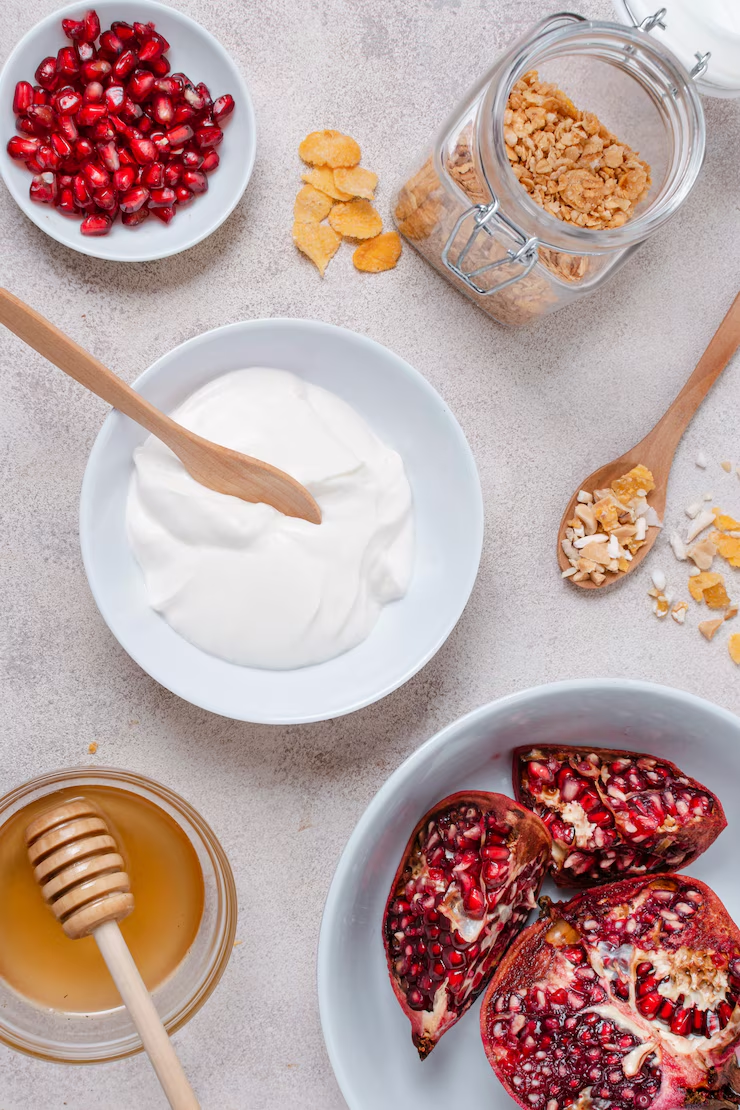
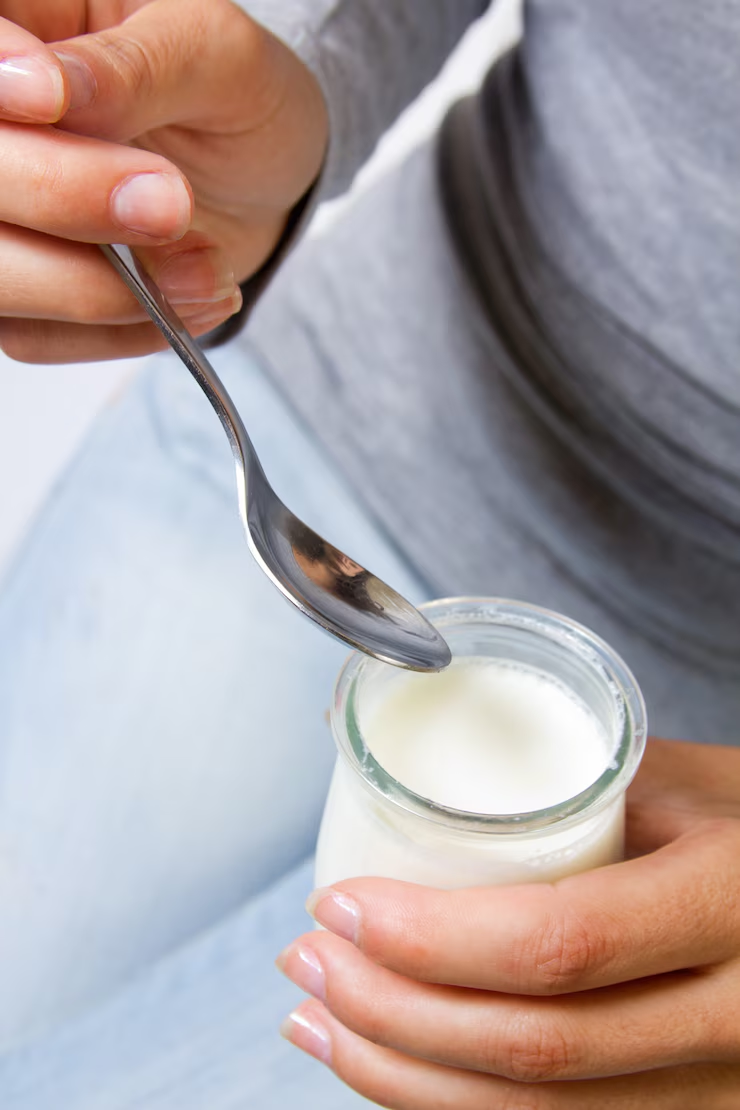
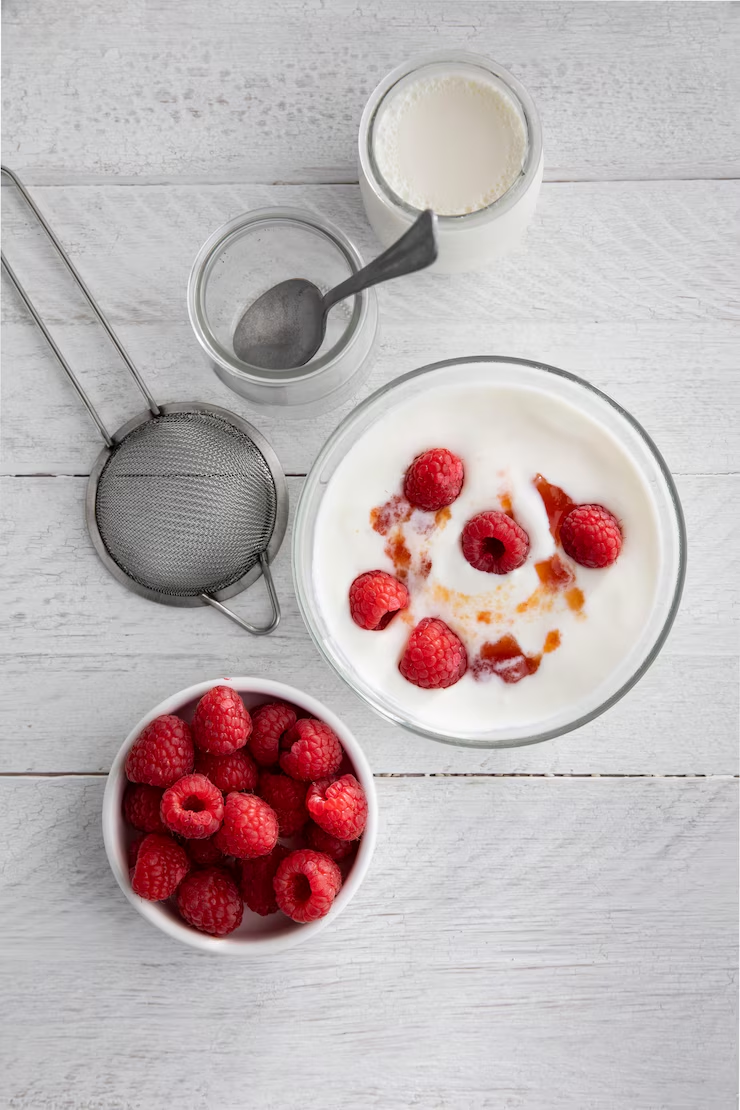


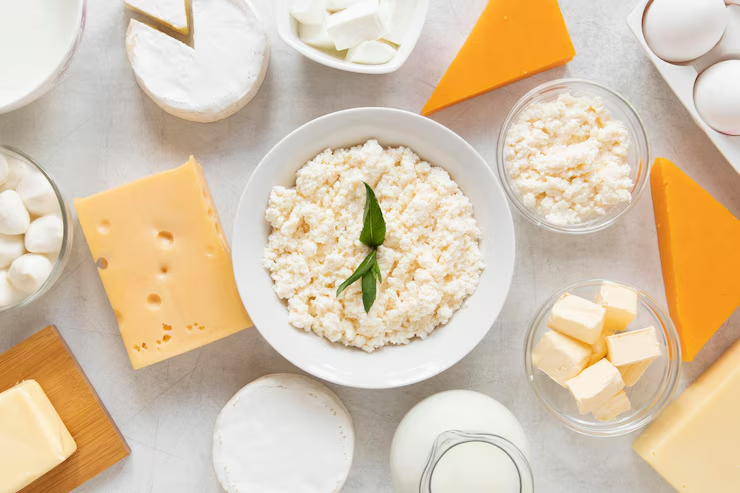






























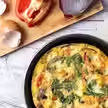



Thank you for your nutritionist guide, most helpful.